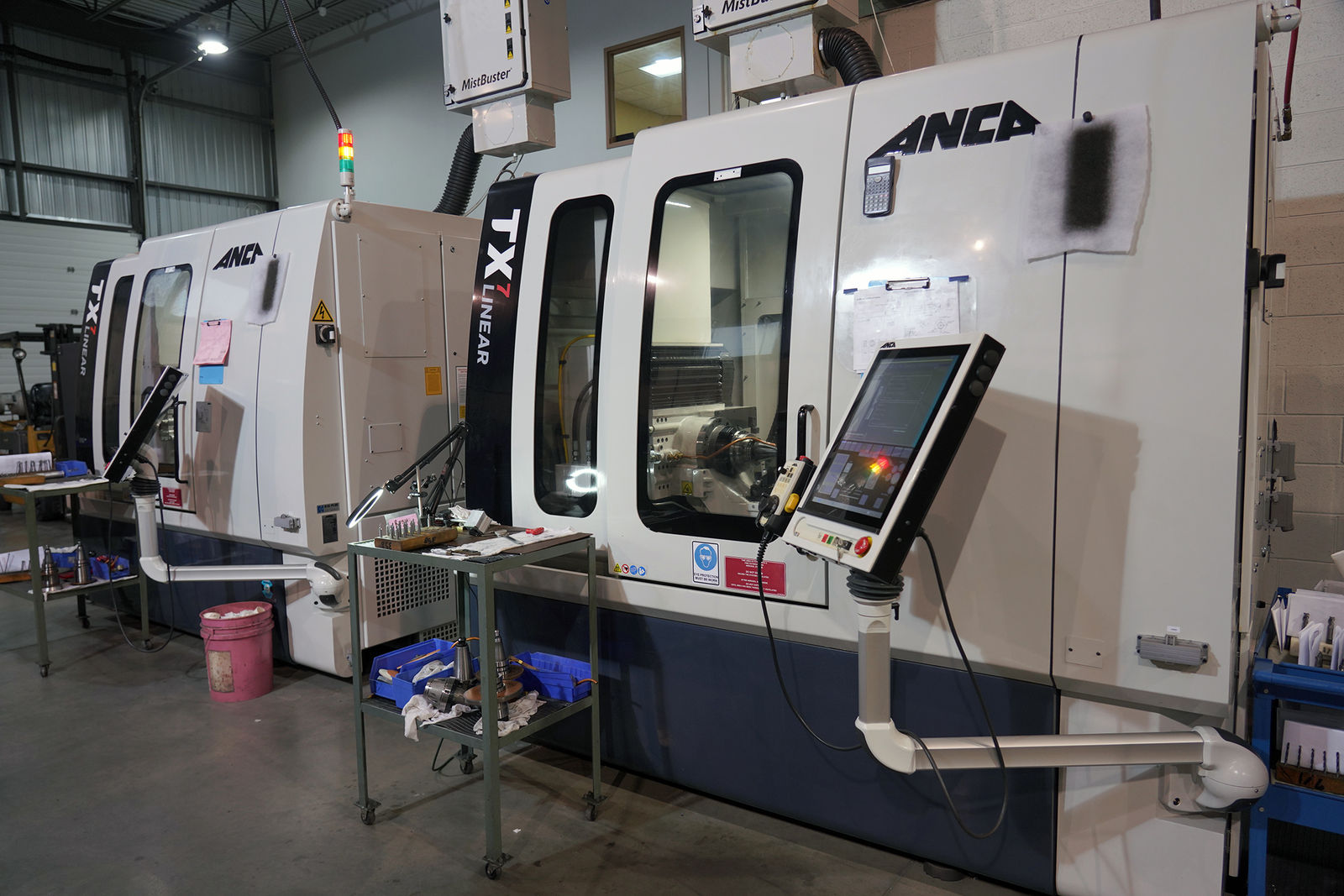ANCA MX7 Linear Assists Clortech with Tooling Needs
Founded in 1987 by Clorindo Mattei, Clortech Precision Cutting Tools is a family business with wife Carmela handling bookkeeping, while son Patrick is the vice-president of production and sisters Emilia and Mena are the managing director and quality assurance director respectively. The company is a Montreal manufacturer of custom precision tools that sells to various industries including aerospace, recreational vehicles, rail and automotive. Products include shafts, gauges, broaches, bushings, extra-long reamers, special diameter formed end mills, special contouring tools.
In the ‘80s and ‘90s, business was made up entirely of aerospace customers. However, events like 9/11 and the global financial crisis, showed how temperamental that sector could be and prompted diversification beyond it. With its high-performance holemaking tools, including drills and special end mills, Clortech expanded into the automotive industry. It also provides drills for rail and tie installers, as well as tools (reaming, milling and holemaking) to help the Canadian Armed Forces in the maintenance and overhaul of tanks and other military equipment. Besides MRO tooling services, they also offer regrinding and reconditioning services to old tools and kit inventory services. Their 360° Approach is aimed at companies that don’t have the necessary resources or workforce to make their own tools, while the AOG 911 service produces or modifies aircraft tools with the shortest lead times.
Currently, the job shop is equipped with CNC lathes, milling machines, cylindrical grinders, tool and cutter grinders and six 8-axis NC ANCA grinding machines (two TG7 Plus grinders, two TX7 machines and two TX7 Linear machines).
While Clortech uses all of its ANCA machines, Patrick Mattei pointed out that more complex/ higher volume parts are manufactured on the ANCA MX7 Linear due to its speed, precision and software which is more detailed than older machines. The machines are used to make round tools such as: endmills, drills and reamers. Most are solid carbide, while some have carbide tips. All tools are manufactured to customer specifications.
Discussing what features stand out on the MX7 Linear, Patrick mentioned the Toolroom software, which allows them to simulate a tool before making it. This greatly reduces scrap. The program’s integrated 3D graphics make on-machine programming easy, as grinding simulation is performed after any parameter change providing instant feedback. When they are satisfied with the geometry, operators take that program and put it on the machine to run it. “The simulation software and offline programming is a very strong feature allowing the machine to run while [operators] work on other programs for different parts that they will be running later. The versatility with lots of axes allow them to make the most intricate type parts.” The importance of the software is further evidenced by the fact that raw materials are very expensive and hard to come by so the ability to run a 3D model of the tool beforehand makes a big difference. Most of the company’s tools are designed from A to Z, offering a turnkey solution. The 3D model can be taken to the customer, and they can simulate the cutting conditions in their machine tool. Thus, Clortech can give the customer something before the actual part is delivered.
Recently, Clortech helped a customer in the automotive industry who was making dovetail type cutters. These cutters require an extremely high degree of precision, and the company couldn’t maintain the tight tolerances. Clortech received the parts and reground them using the MX7. When completed, not only where the tools done within specification but the "product was better than what the customer was making themselves."





